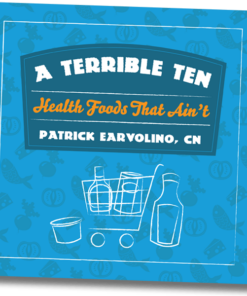By W.J. McCormick, MD

The following is a transcription of the original Archives document. To view or download the original document, click here.
Ascorbic Acid as a Chemotherapeutic Agent[spacer height=”20px”]
Until recently ascorbic acid has been used primarily and solely for its vitamin action as an antiscorbutic agent. In such use the daily requirement of the infant and young child has been placed at 25–50 mg and that of the adult at 75–150 mg. The vitamin C properties, which are mainly prophylactic, are related primarily to its role in maintaining stability and tensile strength of connective tissues generally, including the subcutaneous tissues, the musculature of the vascular and alimentary systems, and the osseous tissues. This property favors the healing of wounds, the prevention of hemorrhage and rupture of connective tissues, and the building of a protective barrier against infectious invasion. Vitamin C is also known to play an essential part in the oxidation-reduction system of tissue respiration and to contribute to the development of antibodies and the neutralization of toxins in the building of natural immunity to infectious diseases.
Aside from these vitamin properties, there is a very potent chemotherapeutic action of ascorbic acid when given in massive, repeated doses of 500–1,000 mg, qqh, preferably intravenously or intramuscularly. When [ascorbic acid is] thus administered, the effect in acute infectious processes is favorably comparable to that of the sulfonamides or the mycelial antibiotics but with the great advantage of complete freedom from toxic or allergic reactions. The advantage of parenteral administration is obvious when one considers that the vitamin, being water-soluble and having no kidney threshold, is eliminated by this route almost as rapidly as it is absorbed from the alimentary system. By intensive parenteral therapy, the blood level can be maintained at a much higher degree of saturation, with resultant increase in antitoxic action.
The writer1 has previously reported spectacular results by this method in the treatment of tuberculosis, scarlet fever, pelvic infection, septicemia, etc. Concurrently, by this same method, Klenner2 has reported dramatic results in the treatment of viral diseases, including poliomyelitis, encephalitis, measles, herpes zoster, viral pneumonia, etc.
This chemotherapeutic effect of ascorbic acid results from its chemical action as a reducing or oxidizing agent. In fact the decolorization of the test reagent dichlorophenolindophenol is dependent on this property. By this means the viral or bacterial toxins are rapidly neutralized, and the febrile process, with its high metabolic rate, is abated—usually within a few hours of the beginning of treatment. Complete recovery occurs usually in a matter of days. By this method the writer has been able to reduce marked leukocytosis in purulent infections to normal within two or three days. Likewise, Klenner3 reports the reduction of pleocytosis of spinal fluid in poliomyelitis to normal within 48 hours under intensive ascorbic-acid therapy. This reduction of leukocyte content of blood and spinal fluid is the best evidence of therapeutic efficacy. Such effects have never been obtained by the use of sulfonamides or mycelial antibiotics.
A point to be noted in this intensive method of therapy is that the urinary elimination of ascorbic acid, being necessarily heavy, is likely to cause confusion in case of urinary tests for sugar, since ascorbic acid is an even more potent reducer of Fehling’s or Benedict’s solution. Thus a positive test under these conditions does not necessarily indicate sugar. This fact in itself is further evidence of the efficacy of ascorbic acid as an oxidation-reduction agent.
Not only endogenous but also exogenous toxins are neutralized by this chemotherapeutic action of ascorbic acid. By this means Klenner has effected rapid recovery from rattlesnake bite in dogs, and the author has obtained rapid recovery in a case of scorpion sting by a single intravenous injection of 1,000 mg. Likewise, ascorbic acid has been effectively employed in the treatment of lead poisoning4 in painters and in suppressing toxic reactions in sulfonamide,5 hormone, salicylate, and arsenic therapy.6
Once the acute febrile or toxic stage of an infectious disease is brought under control by massive ascorbic acid administration, a relatively small maintenance dose of the vitamin will be adequate in most cases to prevent relapses—just as in fire protection small chemical extinguishers may be adequate to prevent fires in their incipiency, whereas when large fires develop, water from a large high-pressure fire hose becomes necessary.
In determining the anti-infectious protective dosage of vitamin C, there is another factor that is not generally considered. When the vitamin is employed to neutralize toxins of endogenous or exogenous origin, the action is reciprocal, in that the vitamin is also neutralized proportionately, leaving less available for physiological needs.
To illustrate, the writer has determined by laboratory and clinical tests that the smoking of one cigarette neutralizes in the body approximately 25 mg of ascorbic acid, or the amount in one medium-sized orange. It will thus be seen how difficult it is for the pack-a-day smoker to meet the bodily requirement of even the protective level of vitamin C from dietary sources. And it is thus obvious that the steady smoker—who is usually short on his dietary intake as well—requires much heavier therapeutic dosage of this vitamin than the nonsmoker.
This may explain why, according to Mayo Clinic reports, the incidence of postoperative pneumonia is four times greater in habitual smokers than in nonsmokers. To prevent postoperative pneumonia, Slotkin and Fletcher7 have instituted the use of large doses of vitamin C, both pre- and postoperatively, with 100 percent success. Prior to this innovation, their postoperative pneumonia mortality rate was 20 percent. Pediatric surgeons might do well to follow this example. Klenner3 reports that pneumonia never develops as a complication in measles when intensive vitamin C therapy is employed early in the disease.
During the past century, there has been a steady decline in the incidence and mortality of most all infectious diseases. Epidemiologists generally8,9,10 admit that the control measures employed “are not adequate in themselves to explain the recorded decline….While the control measures that have been applied have probably accentuated the decline in young adult life…it seems reasonable to attribute the general decline to other factors more general in character and of which but little is really known.”
From increasing evidence of the antitoxic and anti-infectious action of vitamin C and from personal clinical experience in the prophylactic and therapeutic application of this vitamin, the author is firmly convinced that the major factor in bringing about this gradually changing picture in infectious disease incidence has been the steady and phenomenal increase in the consumption of vitamin-C-rich fruits—notably citrus fruits and tomatoes—during the period in question.
This hypothesis would not only account for the gradual decline in incidence but would also explain the shift in age in the incidence of tuberculosis, diphtheria, poliomyelitis, etc., from the younger to the older age brackets—due to the fact that in the nursery the full benefit of this nutritional reform is obtained, whereas during childhood and early youth perverse dietary habits are gradually acquired through lack of parental guidance and inadequacy of public health education. The increased use of candy, carbonated beverages, tea, coffee, tobacco, and alcohol tends gradually to displace the more wholesome nutritional habits of early childhood, and malnutrition—with increased susceptibility to disease—is the price we pay for this diversion.
In conclusion it may be of interest to note that centuries ago observing physicians detected the predisposing influence of scurvy on the incidence of infectious diseases. In 1689 Richard Morton, one of the earliest writers on tuberculosis (then known as phthisis), stated in his famous Phthisiologia that “scurvy is wont to occasion a consumption of the lungs.” Likewise, Boerhaave, a Dutch physician of international repute in the early eighteenth century, held to the view that “gangrenous gingivitis,” then frequently concurrent with diphtheria, was evidence of a scorbutic background.
Summary
Clinical and laboratory evidence is cited in support of the author’s advocacy of intensive vitamin C administration as a chemotherapeutic agent in infectious diseases. The efficacy of this therapy is dependent on the potent oxidation-reduction action of ascorbic acid and the use of massive doses with complete freedom from toxic or allergic reactions. There is an unusually broad spectrum of antibiotic action in this therapy, including practically all bacterial and viral infections. It is also highly potent as an antitoxic agent in exogenous poisoning, organic and inorganic.
By W.J. McCormick, MD, Toronto, Canada. Reprinted from Archives of Pediatrics, New York: The Practical Monthly on the Diseases of Infants and Children, 69:151–155, April 1952, by the Lee Foundation for Nutritional Research. Copyright by E.B. Treat and Co., Inc., New York.
References
1. McCormick, W.J. “Vitamin C in the Prophylaxis and Therapy of Infectious Diseases.” Arch. Pediat., 68:1–9, 1951.
2. Klenner, Fred R. “Massive Doses of Vitamin C and the Virus Diseases.” Paper presented at convention of the Tri-State Medical Association of the Carolinas and Virginia, held at Columbia, February 19-20, 1951.
3. Klenner, Fred R. “The Treatment of Poliomyelitis and Other Virus Diseases with Vitamin C.” South. Med. and Surg., Vol. III, No. 7, 1949.
4. Holmes, H.N., Campbell, K., and Amberg, E.J. “Effect of Vitamin C on Lead Poisoning.” J. Lab. and Clin. Med., 24:1119, 1939.
5. McCormick, W.J. “Sulfonamide Sensitivity and C-Avitaminosis.” Canad. M.A.J., 52:68–70, 1945.
6. Pelner, L. “Use of Ascorbic Acid in Reducing Toxicity of Stilboestrol and Arsenical Therapy.” J.A.M.A., 123:112, 1943.
7. Slotkin, G.A., and Fletcher, R.S. “Ascorbic Acid in Pulmonary Complications Following Surgery.” J. Urol., November 6, 1944.
8. Ross, Mary A. “Tuberculosis Mortality in Ontario.” Canad. Pub. Health J., 25:73, 1934.
9. McKinnon, N.E. “Mortality Reductions in Ontario, 1900–1942.” Canad. Pub. Health J., 36:423, 1945.
10. Davis, Paul V. “Tuberculosis Epidemiology.” Dist. of Chest., p. 21, September 1939.
Reprint No. 5C
Price – 3 cents
Lee Foundation for Nutritional Research
Milwaukee 1, Wisconsin
 Get self-health education, nutrition resources, and a FREE copy of A Terrible Ten: Health Foods That Ain't ebook.
Get self-health education, nutrition resources, and a FREE copy of A Terrible Ten: Health Foods That Ain't ebook.

